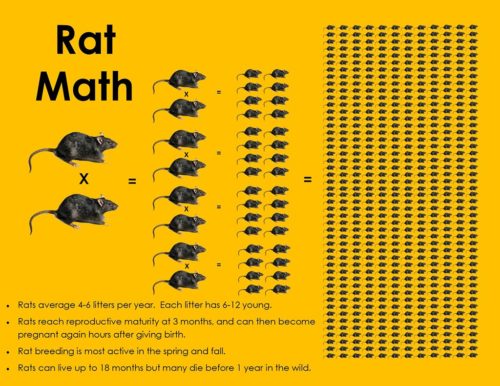The most common rat found in central Ohio is the Norway Rat, Rattus norvegicus.
- The Norway Rat can grow up to 18 inches long and can weigh up to one pound!
- Despite its large size, rats can squeeze through a hole a half-inch in diameter.
- Rats are athletes. They can jump 3 feet in the air, climb up just about anything, and can swim half a mile at a time. They can even climb or swim up inside of pipes and can survive a 50 foot drop.
- Rats will eat anything, including dog poop and trash. According to the Smithsonian National Zoo, one rat was found to have over 4000 unique materials in its stomach.
- Rats can chew through most materials including some metals, wood, and plastic.
- Rats are social animals and will live in a group in a burrow underground. If there is adequate food, shelter, and water nearby, they will stay within a couple hundred feet of their burrow.
- Rats can reproduce rapidly. Just 2 rats can produce up to 15,000 descendants within a year under ideal conditions
- Rats average 4-6 litters per year. Each litter has 6-12 young.
- Rats reach reproductive maturity at 3 months, and can then become pregnant again hours after giving birth.
- Rat breeding is most active in the spring and fall.
- Rats can live up to 18 months but many die before 1 year in the wild.

Rats are a threat to public health.
They can spread disease either directly through their saliva, urine, and droppings, or indirectly through their fleas, mites, or ticks.
- Read more information about diseases that can be spread directly by rodents.
- Read more information about diseases spread indirectly through rodents.
- Rat bites account for 1% of the 2 million animal bites that occur yearly in the US according to the Journal for Pediatrics & Child Health. However, some of these bites come from pet rats. There have been no known cases of a rat or mouse transmitting rabies to a human. Post exposure prophylaxis is not required, according to the CDC.
- Rats can produce up to 50 droppings per day and are incontinent, leading to frequent urination.


